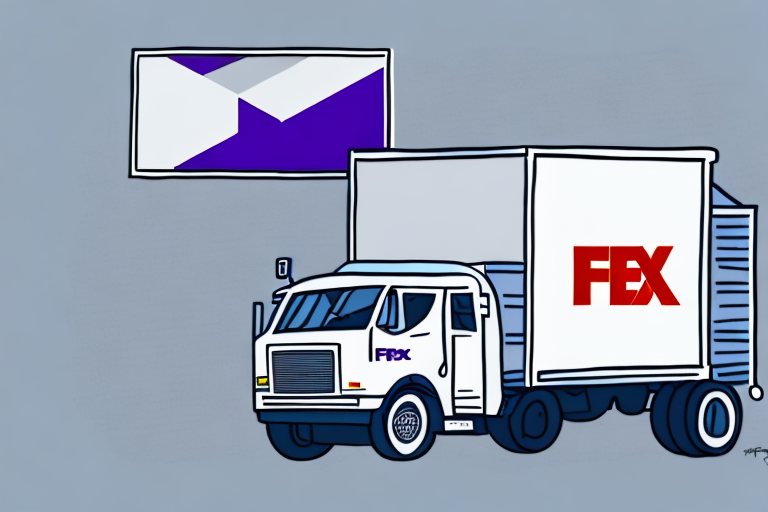Comparing FedEx One Rate vs Standard Rate: Which is the Best Option?
When it comes to shipping with FedEx, choosing the right rate is crucial for optimizing costs and ensuring reliable delivery. FedEx offers two primary shipping options: One Rate and Standard Rate. Each has its own set of advantages and disadvantages tailored to different shipping needs. This comprehensive guide delves into both rates, providing detailed analysis and data to help you make an informed decision for your specific shipping requirements.
Understanding FedEx One Rate
What is FedEx One Rate?
FedEx One Rate is a flat-rate shipping option that simplifies shipping costs by offering pre-determined prices based on the weight of the package and the distance it travels. Packages can weigh up to 50 pounds and be of any shape or size, provided they fit within FedEx's standardized packaging dimensions. The One Rate pricing covers the cost of packaging, fuel, delivery, and service fees, making it an all-inclusive solution for shippers.
One of the primary benefits of FedEx One Rate is cost transparency. Businesses can easily predict shipping expenses without worrying about fluctuating rates based on distance or package dimensions. According to FedEx's 2023 Annual Report, the One Rate option is particularly popular among small to medium-sized enterprises (SMEs) due to its straightforward pricing structure.
Advantages of FedEx One Rate
- Flat Pricing: Simplifies budgeting with a fixed cost regardless of distance.
- Included Packaging: Free packaging options reduce additional costs.
- Predictability: Easy to forecast shipping expenses, beneficial for businesses with consistent shipping volumes.
- Convenience: Online label printing and scheduled pickups streamline the shipping process.
- Variety of Packaging: Offers boxes, envelopes, and tubes to accommodate different shipping needs.
Disadvantages of FedEx One Rate
- Limited Customization: Less flexibility in handling specific packaging or delivery requirements.
- Cost Inefficiency for Large Shipments: May not be the most economical choice for heavier or oversized packages.
- Availability Restrictions: Not available for all international or remote destinations.
Understanding FedEx Standard Rate
What is FedEx Standard Rate?
FedEx Standard Rate is FedEx's traditional shipping option, where prices are calculated based on the package's distance, weight, and dimensions. Unlike the One Rate, Standard Rate offers more flexibility, allowing businesses to tailor their shipping according to specific needs. This rate is suitable for a wide range of shipping scenarios, from domestic to international deliveries.
FedEx Standard Rate is favored by businesses that require customized shipping solutions. According to the FedEx website, this option provides various delivery speeds and tracking capabilities, making it a versatile choice for diverse shipping needs.
Advantages of FedEx Standard Rate
- Flexibility: Accommodates a wide range of package sizes and weights.
- Multiple Delivery Speeds: Options include overnight, 2-day, and ground shipping to meet different timelines.
- Real-Time Tracking: Enhanced tracking features provide visibility throughout the shipping process.
- International Shipping: Extensive global reach with competitive rates for international destinations.
Disadvantages of FedEx Standard Rate
- Variable Pricing: Costs can fluctuate based on distance, weight, and package dimensions, making budgeting more challenging.
- Additional Packaging Costs: Unlike One Rate, standard rate may require purchasing separate packaging materials.
- Complex Cost Calculations: Determining the exact shipping cost can be more time-consuming due to multiple variables.
Key Differences Between One Rate and Standard Rate
Pricing Structure
The fundamental difference lies in the pricing models. FedEx One Rate offers a flat rate based on weight and distance, providing cost certainty. In contrast, FedEx Standard Rate calculates costs based on weight, distance, and package dimensions, allowing for more customized pricing but introducing variability.
Delivery Time
FedEx One Rate typically ensures guaranteed delivery times within 1-3 business days, making it ideal for time-sensitive shipments. FedEx Standard Rate offers multiple delivery speeds, including overnight and 2-day options, giving customers the flexibility to choose based on urgency and budget.
Packaging Options
FedEx One Rate includes a variety of free packaging options such as boxes, envelopes, and tubes. This all-inclusive approach simplifies the shipping process. On the other hand, FedEx Standard Rate requires shippers to provide their own packaging or purchase from FedEx, adding an extra step to the shipping workflow.
Factors to Consider When Choosing a FedEx Rate
Package Size and Weight
Assessing the dimensions and weight of your packages is crucial. If you frequently ship medium-sized packages with consistent weights, FedEx One Rate may be more economical. For larger or irregularly shaped packages, FedEx Standard Rate offers the necessary flexibility.
Shipping Distance
The distance your package travels impacts the cost differently for each rate. One Rate's flat pricing may offer savings for long-distance shipments, whereas Standard Rate's variable pricing could be advantageous for shorter distances.
Budget Considerations
For businesses with tight budgets, the predictability of One Rate can aid in financial planning. However, if your shipping needs vary significantly, Standard Rate might provide cost-efficiency through tailored pricing.
Delivery Time Constraints
If guaranteed delivery times are essential, FedEx One Rate offers reliable timelines. For more flexibility, Standard Rate provides multiple delivery speed options to match your scheduling needs.
Cost Calculation and Real-world Savings Examples
Calculating FedEx One Rate Shipping Costs
To determine the cost of FedEx One Rate shipping, select the appropriate package size and weight, then identify the destination zone. The pricing is automatically calculated based on these parameters, ensuring straightforward budgeting.
Calculating FedEx Standard Rate Shipping Costs
FedEx Standard Rate requires entering detailed package information, including dimensions, weight, and destination zip code. The final cost is determined by analyzing these factors against FedEx's pricing tiers, which can vary significantly based on the specifics.
Examples of Cost Savings
- A small package weighing 5 pounds traveling 300 miles costs approximately $29 with FedEx One Rate versus $37.88 with FedEx Standard Rate.
- A larger package weighing 30 pounds traveling 1,000 miles costs around $97 with FedEx One Rate compared to $129.86 using FedEx Standard Rate.
- Frequent shipments of similar-sized packages can lead to significant savings over time with FedEx One Rate due to its consistent pricing structure.
These examples highlight how FedEx One Rate can offer substantial cost savings, especially for businesses with regular shipping patterns. Additionally, the inclusion of free packaging can further reduce overall shipping expenses.
Choosing the Right Rate for Your Needs
Selecting between FedEx One Rate and Standard Rate depends on several factors unique to your shipping requirements:
- Consistency: If your shipping volume and package sizes are consistent, One Rate provides predictable costs.
- Flexibility: For varied shipping needs with different package sizes and destinations, Standard Rate offers the necessary adaptability.
- Budget: Evaluate which rate aligns better with your financial planning, considering both fixed and variable costs.
- Delivery Speed: Choose the rate that offers the delivery timelines crucial for your business operations.
By analyzing these factors, businesses can determine the most cost-effective and efficient shipping option tailored to their specific needs.
Optimizing Your Shipping Strategy with FedEx
Utilize a Mix of Shipping Options
Don’t limit your shipping strategy to a single rate. Incorporate both FedEx One Rate and Standard Rate based on individual shipment requirements. This hybrid approach can optimize costs while maintaining flexibility.
Leverage FedEx’s Packaging Solutions
Take advantage of FedEx's free packaging options under the One Rate to reduce additional expenses. Proper packaging not only safeguards your products but also ensures compliance with FedEx's shipping standards.
Regularly Compare Rates
Shipping rates can fluctuate based on market conditions, fuel prices, and other factors. Regularly reviewing and comparing FedEx's rates ensures you are always leveraging the most cost-effective options available.
Implement Real-Time Tracking
Use FedEx's real-time tracking features to monitor your shipments. This enhances transparency and allows for proactive management of delivery timelines, improving overall customer satisfaction.
Conclusion
Choosing between FedEx One Rate and Standard Rate requires a thorough understanding of your shipping needs, budget, and business goals. FedEx One Rate offers simplicity and predictability, making it ideal for consistent, small to medium-sized shipments. In contrast, FedEx Standard Rate provides flexibility and a range of delivery options, catering to more diverse shipping scenarios.
By carefully evaluating the factors outlined in this guide and utilizing data-driven insights, businesses can optimize their shipping strategies, achieve cost savings, and enhance their overall logistics efficiency. For the most accurate and up-to-date information, always refer to the official FedEx website or consult with a FedEx representative.








